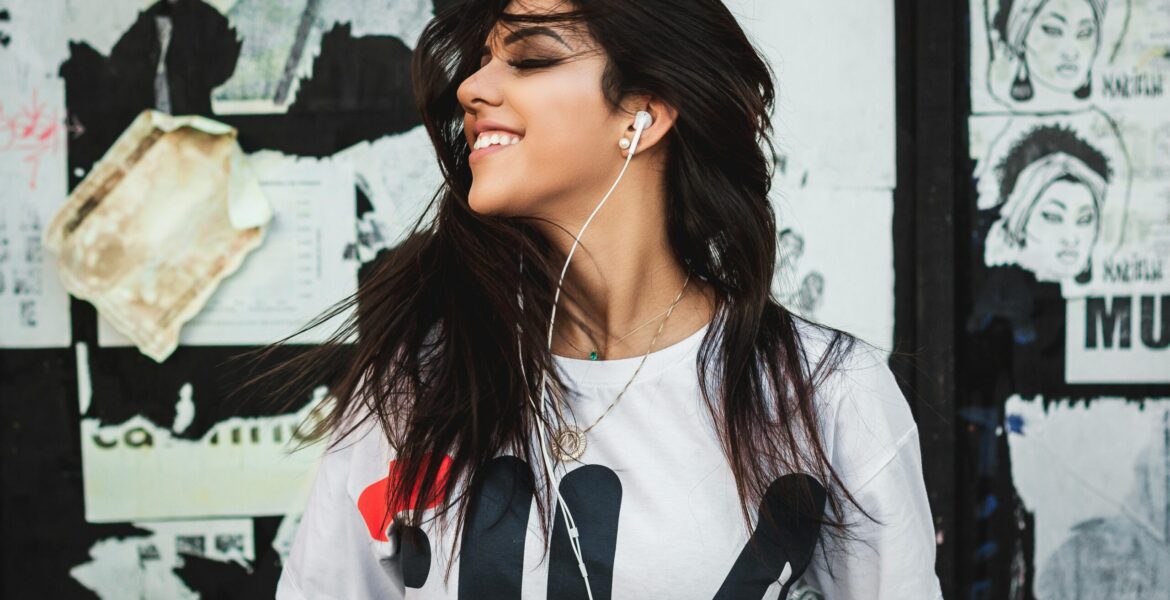Music for Podcasts

Imagine trying to give someone a recipe for lasagna, or maybe directions to the post office, using only musical notes or rhythms. Not so helpful, right? Music may not be a great way to communicate facts. But it is an amazing way to elicit emotion.
Laurie Anderson (the musician and performance artist who recently received a Grammy Award for lifetime achievement) told me something years ago that has stayed with me since: “Music is a great resonator.” It stirs something inside you, often before you even realize it. She said, “Music fills your body in a way that makes your heart pound, makes you sweat, makes you cry. You have a physical, galvanic response to it. Very few things do that. Very few art forms do that.”
It’s true that music can conjure feelings and memories more directly—and sometimes more intensely—than spoken language alone. In podcasts, music might give your listeners permission to feel more deeply, or give them a moment to process what they’ve just heard. It can accentuate the emotion in a line of dialogue or draw attention to a crucial moment. It can quickly orient listeners to a faraway place or gently bring them back home.
It’s a powerful tool, if used well and judiciously (remember that silence is important, too!).
Too often, though, music is an afterthought in production. Podcasters sometimes choose music cues haphazardly, in an attempt to make episodes sound more slick or professional, without really considering how music can make those episodes more impactful and memorable and authentic, too; how the right music—at the right moment—can elevate the experience and leave your listeners wanting more.
Here at Pacific Content, we spend a lot of time searching for the perfect music to make podcasts sing. In many cases, we work with partners and clients in the early stages of production to develop “mood boards”—audio collages to help build and test out the musical and sonic personality of a show. And we work hard to find or create theme music that speaks to the values and tone and intended audience of a podcast.
But, as the old saying goes, talking about music is like dancing about architecture. So, let’s listen to some examples:
The first one comes from a ghost story series called Night Frights that we produced for Audible with the wonderfully terrifying Celina Myers, aka Celina Spooky Boo. Here, sound designer Robyn Edgar deftly builds a visceral scene around two characters wrestling a demon in their attic. Robyn used a combination of foley and sound effects and a perfectly chosen string and percussion music cue that seriously elevates the spine-tingling story.
This clip is from a podcast we produced for SciMar called Inside The Breakthrough. Here, sound designer Mark Angly creates a deeply melancholy atmosphere for a story about the Irish potato famine. He underpinned it perfectly with the plaintive sound of a solo violin over a slow moving string section.
For a very different mood, here’s a clip from an episode of the Choiceology podcast we produce for Charles Schwab. It’s from the fascinating story of Brian Zinn and his decades-long quest to unravel an elaborate riddle from the fantasy book The Secret: A Treasure Hunt. Even though Brian is talking here about digging in the mud in Cleveland, I wanted to use music to set him in the fantasy world of the book to make the story even more fanciful and exciting.
And one more from Choiceology, where a high stakes scene is playing out during the Cuban missile crisis. I wanted to bring to life the confusion and tension that was building as a Soviet sub armed with nuclear torpedoes was surfacing after being bombarded by depth charges from an American sub hunter ship. I used music that was repetitive, insistent, and pulsing but that didn’t compete with the rest of the sound design.
At Pacific Content we occasionally work with composers to create bespoke music. But in day-to-day production work (where deadlines are often tight) we typically use the APM Music library and the Universal Production Music library, both of which are massive catalogues of music tracks licensed for use in various media.
What we look for when using production music libraries:
- wide range of styles
- high production values
- musicality (fake instruments and poor musicianship are mood killers)
- variety (tracks that have internal variation so cues don’t get boring quickly)
- flexibility (underscore versions, stems, stings, alt versions)
- availability of vintage historical music
- intuitive and flexible search
So, how should you think about music for your podcast? Early and often. Be subtle. Be brash. Do the obvious, or play against type. Choose music that will help the audience lose themselves in your stories, but won’t compete with the narrative.
The right music can make a huge difference in the way that listeners engage and react. The best emotion music can elicit? Love. And listeners will love your show when they resonate with it.
![]()
Sign up for the newsletter for the latest brand storytelling and podcast inspiration, insights, right in your inbox, every two weeks. We promise to never spam you.
Got an idea or brand challenge you’d like to talk to us about? Contact us using this handy form.
